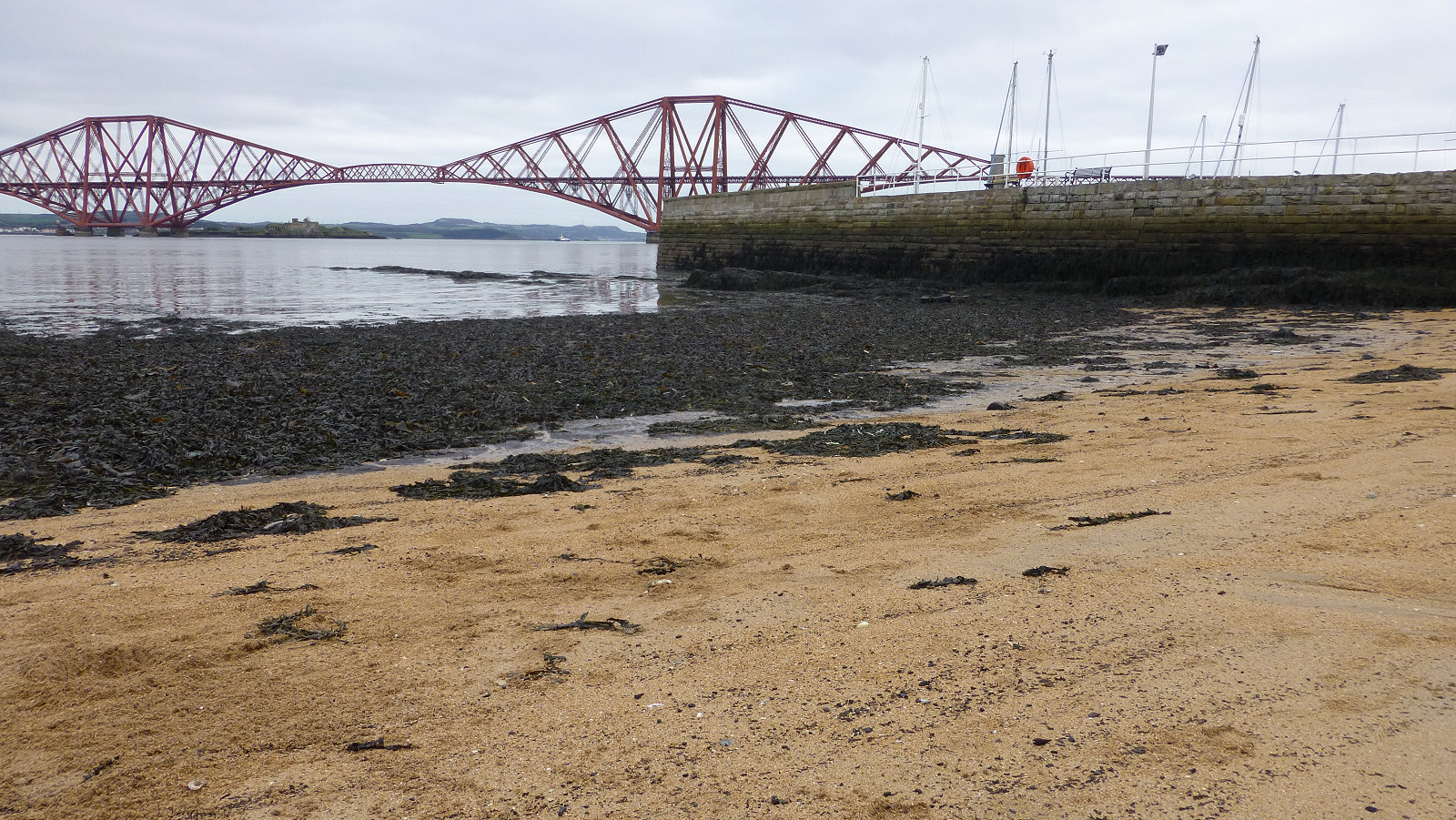Beaches and sand dunes are often the easiest places for the beginner to start a sand collection. They are usually easy to access and sand is plentiful and simple to collect, well, at least when the tide is out! While not always as productive as sand and gravel pits, with some carefully searching many different grades and colours of sand can be collected. Sand dunes, however, do tend to have a rather limited range of sands available for collecting.
At a recent trip to a small beach near Dunbar in East Lothian, I was able to collect six different samples, all with slightly different shades and compositions. Another trip to a similar beach, just a few miles along the coast, produced eight different samples. I’ve also found that as you gain experience you will find that the number of samples you can collect increases and it is often worthwhile re-visiting locations you visited earlier in your collecting career.
When visiting beaches one of the first places to collect samples from is the top of the dunes, where wind blown sand will have settled. This will be very fine and in many instances will also be dry – saving you having to dry it, sieve out the bugs and others stuff! Organisms are usually absent in surface layers although grass and root fragments may need sieved out. Older dunes, usually located further inland, will have similar sand but of different colours due to weathering and leaching over the years.
The next place to gather sand is at the foot of the dunes, at the edge of the high-tide line. Here the sand may be comprised of larger particles as well a shell and other fragments. Sand can also vary quite widely from one end of the beach to the other, particularly if the beach runs parallel to the prevailing wind direction. I would always advise examining the whole length of a beach. A good way to walk a beach is in a zig-zag pattern, searching between low tide and high tide. With wind-blown sand it is sometimes possible to encounter pockets of different sized grains of sand on either side of a suitable obstacle, such as a pebbles, beach debris or similar objects.
Gathering samples from between high and low tide lines can be quite productive, although what can be found will very much depend on the individual beach and local geological environment. One point of note when collecting in this tidal zone is that there may be considerable living organic matter in the samples and washing is very much advised. A good tip is only to collect from the top 10mm or so. This leave the resident animals and insects in situ.
The sandy areas of beaches are not the only places to look for samples. Even in areas where pebbles, boulders and even volcanic bedrock dominate, isolated patches of colourful and interesting sand may be found often made up entirely of the tiny fragments of the local rock. It’s also worth investigating where small streams flow across the beach. When looking for different sands at the beach, pay attention of areas where the colours and shades of the sand change, particularly dark areas, which may indicate where heavier minerals have settled.
Paying attention to local beach geology can often be fruitful. Even if you do not have any great understanding of the rocks you come across, it is sometimes enough just to recognize that the local rock outcrops have changed. A recent example was Coldingham Beach near Eyemouth in East Lothian. Here the geology at either end of the beach is quite different and the sand is correspondingly varied as well.
Before planning a trip to a beach, particularly if travelling some distance, it makes good sense to check out the tide times before leaving. Opportunities for collecting samples can be severely restricted when the tide is in. Not only are parts of the beach itself below water but you may also find that other inlets and coves are also out of reach. There are plenty of sites on the Internet where up-to-date and tide tables can be found.
Copyright ©2020 Gary Buckham. All rights reserved.


